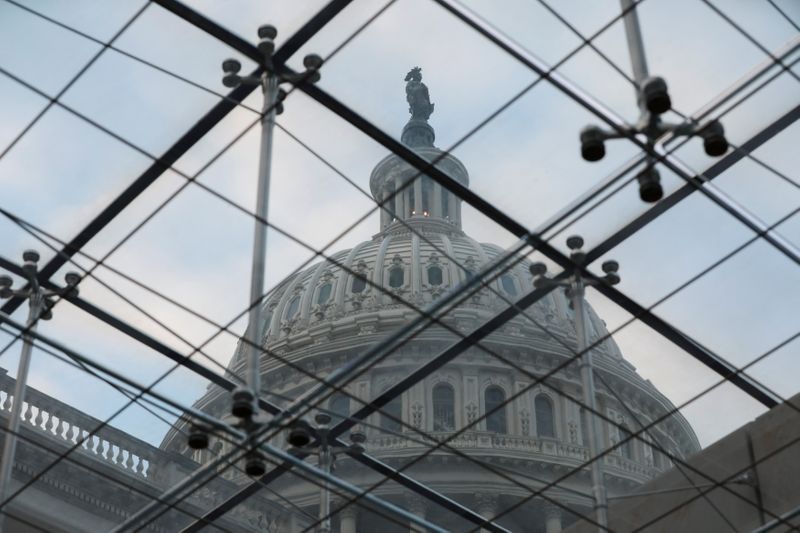ION expands ETF trading capabilities with Tradeweb integration
Investing.com -- A potential U.S. government shutdown poses only limited fundamental risk to government services stocks, though some companies may face greater pressure than peers, according to TD Cowen.
Investor concerns have increased ahead of the budget impasse, but the last extended shutdown in late 2018 and early 2019 had only an “immaterial impact to sales (sub 1%)” and a slightly larger effect on cash flow (CF) due to invoicing delays, which were later resolved, analyst Gautam Khanna said in a note.
“The stocks sold off into the ’18/19 shutdown as sentiment overshot the fundamental drag,” he wrote.
This time, Khanna said sales and cash flow impacts could be somewhat higher, since the potential shutdown would not overlap major holidays, a period when business activity typically slows.
The analyst also flagged risks from the Trump administration’s intent to reduce federal staffing, which may “gum up the normal pace of business/contract awards/sales/CF for the gov’t services contractors once the shutdown ends.”
Among individual names, Booz Allen Hamilton (BAH) and Science Applications International Corp (SAIC) were cited as more exposed fundamentally.
BAH enters the period with aggressive second-half fiscal 2026 sales and EPS guidance and limited funded backlog, creating a high risk of an outlook cut.
SAIC, while supported by a strong funded backlog, is heavily reliant on federal civilian customers and on new business wins to hit fiscal 2027 targets.
TD Cowen said it cannot rule out a guidance revision for SAIC if the shutdown drags on.
“The stocks of BAH/SAIC have de-rated the most (vs. peers) over the past 30 days, so we believe they have the most recovery potential once the shutdown’s conclusion seems probable,” Khanna added.
Other contractors, including CACI, Leidos, and Parsons, are better positioned thanks to funding buffers, with Parsons further supported by a large non-U.S. business. Khanna said a one-month shutdown is unlikely to trigger outlook cuts for these companies.
Despite the near-term challenges, he highlighted that BAH and SAIC stocks have already underperformed peers in recent weeks, giving them “greater recovery potential once the shutdown’s conclusion becomes more visible.”
